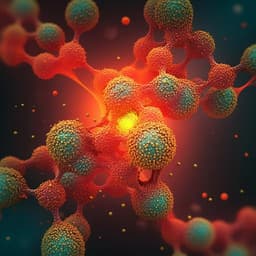
Computer Science
An interactive ImageJ plugin for semi-automated image denoising in electron microscopy
J. Roels, F. Vernaillen, et al.
Discover how DenoisEM, an innovative ImageJ plugin for GPU-accelerated denoising developed by Joris Roels and colleagues, dramatically enhances the speed and quality of 3D electron microscopy data. This breakthrough allows for a fourfold increase in data acquisition speed, ensuring exceptional visualization and segmentation without compromising quality.
Playback language: English
Related Publications
Explore these studies to deepen your understanding of the subject.







